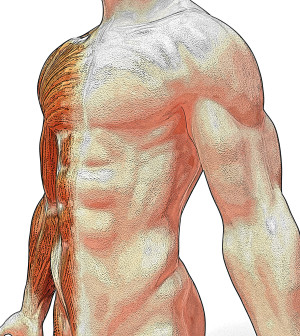- Navigating Your Midlife Crisis: Embracing New Possibilities
- City Raccoons Showing Signs of Domestication
- Mapping the Exposome: Science Broadens Focus to Environmental Disease Triggers
- One Week Less on Social Media Linked to Better Mental Health
- Your Brain Changes in Stages as You Age, Study Finds
- Some Suicide Victims Show No Typical Warning Signs, Study Finds
- ByHeart Formula Faces Lawsuits After Babies Sickened With Botulism
- Switch to Vegan Diet Could Cut Your Greenhouse Gas Emissions in Half
- Regular Bedtime Does Wonders for Blood Pressure
- Dining Alone Could Mean Worse Nutrition for Seniors
Air Pollution Exposure May Boost Risk of Early Death


Breathing in tiny particles of toxic chemicals from the air could lead to an increased risk of premature death, a large new study suggests.
“Our data add to a growing body of evidence that particulate matter is really harmful to health, increasing overall mortality, mostly deaths from cardiovascular disease, as well as deaths from respiratory disease in nonsmokers,” the study’s lead investigator, George Thurston, said in a news release from NYU Langone Medical Center. Thurston is a professor of population health and environmental medicine at NYU Langone in New York City.
The data used in this study came from government and independent sources, Thurston added.
However, this study was only able to show an association between an increased risk of early death and air pollution; it cannot prove a cause-and-effect relationship.
Fine particles are often made up of toxic chemicals, such as arsenic and mercury. The chemical particles polluting the air are microscopic. That means they’re too small to see with the naked eye.
Their tiny size allows the particles to get past the body’s defenses. They can be absorbed deep into the lungs and bloodstream, increasing the risk for serious heart and lung diseases, the researchers said. These particles can also carry gaseous pollutants, including sulfur and nitrogen oxides, into the lungs. Unlike larger natural substances, these tiny particles can’t be coughed up or sneezed out, the researchers explained.
The investigators cautioned that even small increases in this type of air pollution can increase the risk of dying from any cause by 3 percent.
An increase in the amount of fine particles in the air increased the risk of death from heart disease by about 10 percent, the study found. And nonsmokers in the study had a 27 percent increased risk of death from lung disease when exposed to increased levels of chemical particles.
The study included information from more than 560,000 men and women. The participants completed health and diet surveys conducted by the U.S. National Institutes of Health and AARP (formerly known as the American Association of Retired Persons). The study volunteers were between 50 and 71, and came from eight U.S. states.
The researchers also collected information on the amount and type of air pollution where the participants lived. This information came from the U.S. Environmental Protection Agency’s Air Quality System and other databases.
After accounting for other factors that could impact health and longevity, the investigators found gender, age and education didn’t alter the effects of exposure to fine particulate matter.
The study authors plan to continue their research, investigating which components of particulate matter are most toxic. They also hope to determine the source of these pollutants.
“We need to better inform policymakers about the types and sources of particulate pollution so they know where to focus regulations,” the study’s senior investigator, Richard Hayes, a professor of population health and environmental medicine at NYU Langone, said in the news release.
“It is especially important to continue monitoring health risks as national standards for air pollution are strengthened,” he added.
Findings from the study were published Sept. 15 in Environmental Health Perspectives.
More information
The American Lung Association has more about the health effects of air pollution.
Source: HealthDay
Copyright © 2025 HealthDay. All rights reserved.










